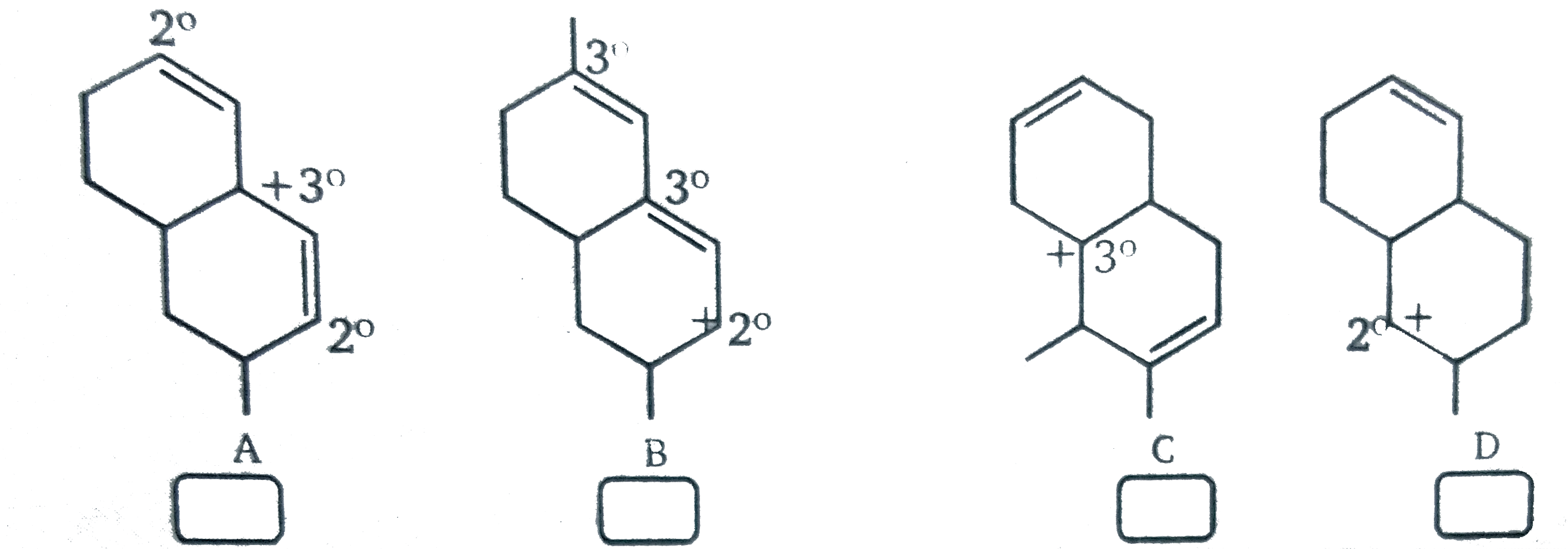Rank in order of radical stability (1 = most stable).
 Solution in Telugu
Solution in Telugu
a > b > c > d
d > c > a > b
a > d > b > c
d > c > b > a
The correct Answer is:a - 4 ; b - 3 ; c - 2 ; d - 1
Topper's Solved these Questions
- GENERAL ORGANIC CHEMISTRY BOOK - MS CHOUHANCHAPTER - GENERAL ORGANIC CHEMISTRY EXERCISE - LEVEL - 2 (SUBJECTIVE PROBLEMS )
13 Videos
- GENERAL ORGANIC CHEMISTRY BOOK - MS CHOUHANCHAPTER - GENERAL ORGANIC CHEMISTRY EXERCISE - LEVEL - 2 (SUBJECTIVE PROBLEMS )
13 Videos
- CARBOXYLIC ACID AND THEIR DERIVATIVES BOOK - MS CHOUHANCHAPTER - CARBOXYLIC ACID AND THEIR DERIVATIVES EXERCISE - LEVEL-2( SUBJECTIVE PROBLEMS)
1 Videos
- GRIGNARD REAGENTBOOK - MS CHOUHANCHAPTER - GRIGNARD REAGENTEXERCISE - Level-2 (Subjective Problems)
6 Videos
Similar Questions
How many 2∘ carbon in the following ?

View SolutionHow many 2∘ carbon in the following ?

View Solution
(Y) is including stereoisomers. Value of (X+Y) will be
View Solution
How many geometrical isomer of (X) is possible ?
View SolutionWhat is the decreasing order of stability (most stable rarr stable ) of the following carbocations ?
View SolutionRank the following alkyl radiclas in order of increasing stability (least <<< most)

View SolutionRank in order of radical stability (1=most stable )

View SolutionRank the following carbocations to stability (1=most stable ,5=least stable )
View SolutionArrange in the order as directed-
The given alkenes in the order of their stability (1,most stable , 3-least stable ).

View SolutionArrange in the order as directed-
Arrange the following alkenes in order of their stability . (1 =most stable ,5 =least stable ).

View SolutionRank the following carbocations in order of stability (1 =most stable )

View SolutionThe order of stability of free radical is-
View SolutionMost stable radical is
View SolutionRank thefollowing radicals in order of decreasing stability

View SolutionRank the following carbocations in order of stability (1 = most stabe)

View SolutionRank the following carbocations in order of stability (1 = most stabe)

View Solution

